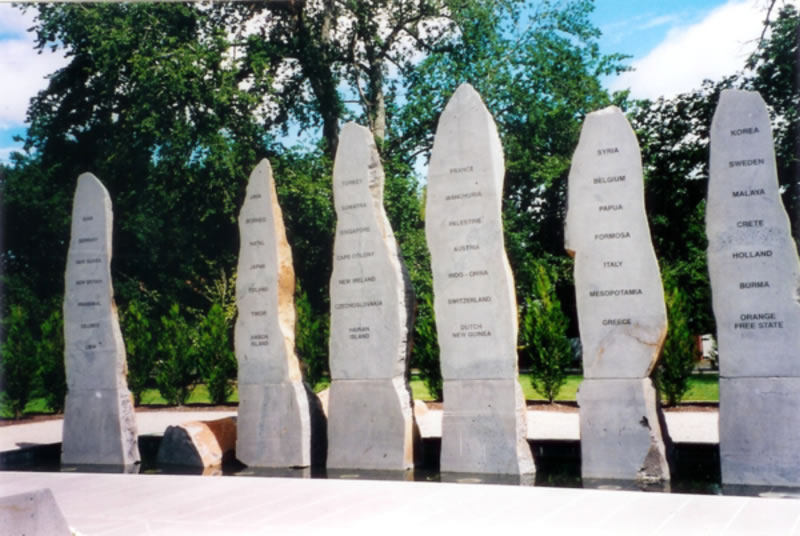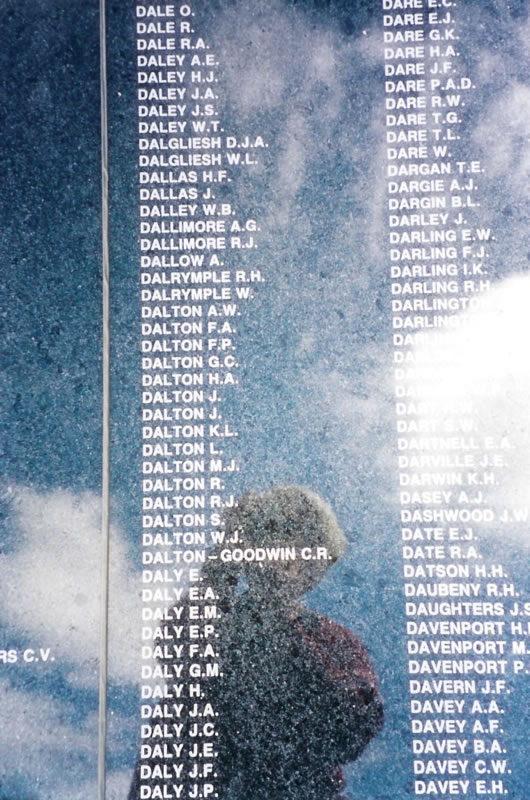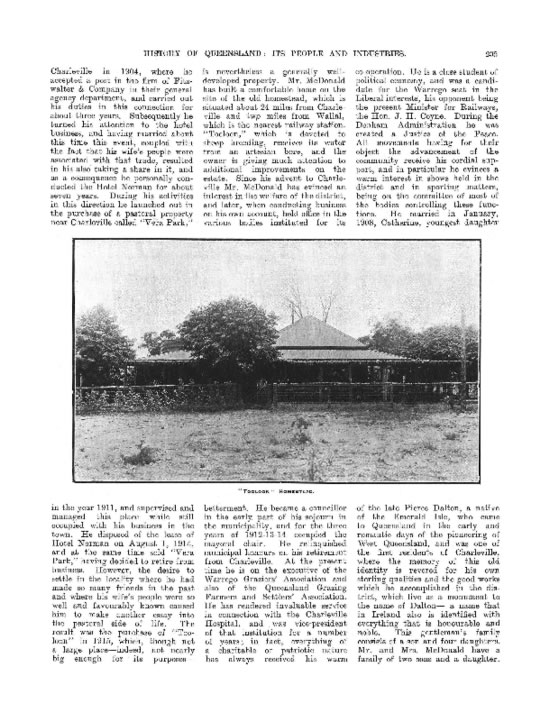|
Michael Dalton, as coordinator of the project gives
an update on its current status and looks forward to 2010.
Issue 3 of the Dalton International DNA Project Progress
Report has now been published. This includes all those who joined the
project up to the end of January 2009. There were 99 participants included
in Issue 2 of the report and Issue 3 has 126 sets of markers recorded
and analysed. This represents an impressive expansion of the project.
Additionally, many participants have extended their number of markers
and this adds considerably to the value of the database as a whole to
our Dalton family history researches.
The report is a landmark document and extends to 54
pages. As part of the Orange conference, I gave a presentation which previewed
its contents. This presentation may be viewed here on the DGS website
in the Photo/Video Gallery.
The number of separately identifiable genetic families
has increased from 10 to 13. The number of singletons has increased by
just three, from 18 to 21. This reflects the high success rate that we
are achieving, with nearly all new project participants finding matches
with existing project members.
Following this update, you will find an extract from
Issue 3 of the report giving a summary of the main conclusions. In addition,
on the DNA Project pages on this website are:
• The foreword to the report, which includes a
history of the project
• A description of the DNA process and how it assists the family
historian
We already have a number of further participants who
have joined the project during the past few months and currently there
are a total of 131 sets of markers in our database. DIDP is one of the
largest and most respected projects of its type internationally, but we
still need to expand it further, particularly with individuals who have
documented ancestral lines that take them back to known English or Irish
Dalton origins. The strength of the database as a family history research
tool lies in its size, and its continued growth is of paramount importance
to us all. So, if you are a Dalton male please do think about joining
this well established and exciting project.
Looking ahead to 2010 the project will undoubtedly continue
to grow. Alongside this we anticipate putting more focus on the identification
of most recent common ancestors within the various genetic families. This
will be assisted by the appointment of coordinators for each genetic family,
and the individual websites that have now been set up for a number of
genetic families at www.dalton-dna.net to enable family tree data to be
shared. Working with Chris Pomery, we are looking at ways of providing
more regular updates to each genetic family group, with reports to the
groups being more frequent and the publication of the full report therefore
correspondingly less frequent.
You are invited to contact us by email if you would
like to join the project, or if you have any questions which you wish
to raise. The details for the overall coordination of the project, and
for the individual genetic family coordinators are as follows:
• The overall coordinator for the project is Michael
Neale Dalton, Chairman & Honorary Life President of the Dalton
Genealogical Society. He is also the group administrator for DIDP with
Family Tree DNA.
• The deputy coordinator for the project is Karen
Dalton Preston, North American Secretary of the DGS. She is also
a co-administrator for DIDP with Family Tree DNA.
• The founder of DIDP is Millicent Craig,
Vice President of the DGS, who continues as a co-administrator for DIDP
with Family Tree DNA.
Any questions that you have about the project should
be referred to Michael Dalton or Karen Preston in the first instance,
or directly to the appropriate genetic family coordinator as follows:
There are a number of genetic family coordinators yet
to be appointed. Volunteers are sought and anyone who is interested in
taking on this role should contact Michael Dalton.
Summary of the Dalton International DNA Project
Progress Report Issue 3 – published October 2009
Our Chairman Michael Dalton gives an update on the
Dalton International DNA Project (DIDP) to coincide with the publication
of Issue 3 of the Project Progress Report to all participants. This summary
includes extracts from the report itself.
The report includes a total of 126 participants. Of these
104 are Y-chromosome DNA results within our own Dalton International Project
hosted by Family Tree DNA. A further 22 results have been inferred by
us, in part or in whole, through links with other Dalton surname projects.
A number of further results have now been received, too recent for inclusion
this time, but they will of course be incorporated into the next issue.
The strength of the DIDP lies in its size, and in its
ability to draw together all this data in one place. We welcome all Daltons
to make their results available within our project in order to further
our collective research into all components of the Dalton family worldwide.
Only by aggregating all our data together can we create the best opportunity
for individual Daltons to identify their true ‘genetic family’
and thus uncover their Dalton ancestral origins.
Everyone who passes their DNA results to the DIDP is
eligible to receive a copy of the full report which then allows them to
interpret their genetic history and identify the most potentially profitable
areas for their future family history research.
The goal of DIDP is to test all of the contending theories
about the multiple origins of Dalton families around the world, and to
reach consensus about the most likely hypotheses to explain both the DNA
results and our current documentary research.
This report summarises the position of the Dalton International DNA Project
at the beginning of 2009, cross-referencing the DNA results of 126 Dalton
men with information about their documented origins.
Of the 104 DIDP men tested, 19 live in the emigrant-donating
countries of the ‘Old World’ (the UK & Ireland) while
85 are descendants of Dalton emigrants and live outside of the UK and
Ireland.
By country of residence, 76 reside in the USA, 17 in
the UK, 6 in Australia, 2 each in Ireland and Canada, plus one in New
Zealand.
Key DIDP Conclusions
As the project stands in 2009 the key conclusions are:
1. The bearers of the Dalton surname worldwide have
multiple genetic origins, i.e. the surname appears to have been acquired
by individual ancestors independently of each other at different times
and in different places.
2. The project’s results are currently aggregated
into thirteen distinct ‘genetic families’ each of which contains
identical or highly similar DNA results.
3. Six of these genetic families trace back to origins
in mainland UK, four in Ireland, and three within the USA.
We expect that all currently US-origin genetic families
almost certainly have their ultimate documented origin in either Ireland
or the UK, though they may more immediately be documented to ancestors
living in the USA. It is quite possible that not only will some of the
singletons turn out to be documented as part of existing genetic families,
but also that some of the genetic families, when documented into a single
tree, will turn out to be linked to another genetic family. Without detailed
documentary research it is hard, purely from the DNA results alone, to
predict quite how often this kind of linkage will occur.
4. 21 results (“singletons”) have so far
not been linked to any other individual in the project. This percentage
of non-matching results is low for a major surname DNA project.
5. The spelling variations of Dolton, Daulton and D’Alton
are found within recognizable Dalton genetic families, not as separate
trees with distinct surnames and DNA signatures.
6. The modal ‘genetic family’ -- Genetic
Family A -- has now grown to include 44 results, only one of which claims
an origin outside of the USA. The modal result identifies the DNA signature
that is so far the most frequently found among the men coming forward
to take the DNA test. Even though it is the most ‘popular’
result, that does not prove that this DNA signature represents (a) the
oldest or original Dalton tree, or (b) the Dalton tree with the most descendants
alive today, or (c) that it is the most populous Dalton tree looking at
the entire history of the surname. Only detailed documentary research
can confirm whether any of the three claims above are associated with
the modal result or not.
7. Genetic Family A is a textbook example of a genetic
bottleneck. This phenomenon occurs when a gene pool is restricted in some
way, most usually as the result of emigration (when only a sub-set of
the total gene pool of a country emigrates and successfully reproduces
overseas) or catastrophe (when only a sub-set of the original gene pool
survives). Broadly speaking, one would expect that the American Dalton
gene pool is less genetically diverse than the original Dalton gene pool
in the British Isles, and that the American Dalton gene pool will reveal
a strong modal result (i.e. one family has reproduced more efficiently
in the USA since its arrival than all the other Dalton families). The
astonishing growth of Genetic Family A in the Americas during the past
three or four centuries deserves to be cited as an example for other surname
groups of the huge differences between the genetic profile of groups of
DNA testees sampled in the British Isles and in emigrant-rich countries
outside of it.
Characteristics of the Dalton Genetic Families
The 13 genetic families identified to date in the DIDP
show the following key characteristics:
1. Ten belong in haplogroup R1b, the most common haplogroup
in Europe and identified with the earliest post-Ice Age expansion to the
edge of western Europe.
2. The two largest genetic families account for half
of all DIDP participants.
3. Based purely upon geographical similarities and the
frequency of DNA results found so far, it appears that several genetic
families may turn out to be sub-groups of other, older and larger, genetic
families:
• Genetic families G & X could turn out to
be part of genetic family A.
• Genetic family Y could be part of genetic family E, or vice versa.
• Genetic families I or J could be part of genetic families B or
D.
• Genetic family H could be part of genetic family F, or vice versa.
| Genetic
Family |
No of
Tests |
Regional
Co-ordinator |
Haplogroup
(tested) |
Geographical
Origin |
| A |
44 |
Karen Dalton Preston |
R1b1b2a1b5 |
USA (Virginia, North Carolina,
Tennessee) |
| B |
10 |
Wendy Fleming |
R1b1b2 |
Ireland (Meath, Westmeath,
Leitrim, Limerick) |
| C |
5 |
Michael Neale Dalton |
R1b1b2 |
Wales (Carmarthenshire) |
| D |
19 |
Karen Dalton Preston |
R1b1b2 |
Ireland (Tipperary, Clare,
Kilkenny, Limerick, Waterford) |
| E |
2 |
Millicent Craig |
R1b1b2 |
England (Lancashire) |
| F |
4 |
to be appointed |
R1b1b2 |
England (Kent) |
| G |
4 |
to be appointed |
R1b1b2 |
USA (Virginia) |
| H |
2 |
to be appointed |
R1b1b2 |
England (Berkshire, Surrey) |
| I |
2 |
Gerry Dalton |
R1b1b2a1b5 |
Ireland (Dublin) |
| J |
3 |
to be appointed |
R1b1b2 |
Ireland (Waterford) |
| X |
3 |
to be appointed |
I2b1 |
USA (Virginia) |
| Y |
2 |
John Dalton |
I |
England (Lancashire) |
| Z |
5 |
Howard John Dalton |
I1 |
England (Yorkshire, Buckinghamshire,
Surrey) |
Geographical Locations of Dalton Genetic Families
The Dalton DNA Project has identified the counties or
states of origin of all of the men taking part. The table below identifies
the genetic families linked to the different geographical areas given
by project participants as the origin of their family tree, where known.
This allows a Dalton man joining our DNA project, who has already traced
his family tree back to a specific country and county or state of origin,
to check whether the genetic family predicted by the results below turns
out to be correct.
| Country |
State/County
Of Tree Origin |
Genetic
Families |
Singletons |
| UK |
Carmarthenshire |
C |
- |
| |
Yorkshire, Buckinghamshire |
Z |
1 |
| |
Lancashire |
E, Y |
- |
| |
Surrey |
H, Z |
- |
| |
Berkshire |
H |
- |
| |
Kent |
F |
- |
| |
London |
F |
1 |
| |
Suffolk |
J |
- |
| |
Hampshire |
B |
- |
| |
Cumberland |
- |
1 |
| |
Norfolk |
- |
1 |
| Ireland |
Limerick |
B, D |
- |
| |
Westmeath, Meath, Leitrim |
B |
- |
| |
Clare, Kilkenny |
D |
- |
| |
Tipperary |
D |
1 |
| |
Clare |
D |
- |
| |
Waterford |
D, J |
- |
| |
Kerry |
- |
1 |
| |
Dublin |
D, I |
- |
| USA |
Virginia |
A, G, X |
1 |
| |
Tennessee, North Carolina,
South Carolina |
A |
- |
| |
New Hampshire |
J |
1 |
| |
Florida |
- |
1 |
| |
Wyoming |
- |
1 |
| |
New York |
- |
1 |
| |
Pennsylvania |
- |
1 |
| |
Georgia |
- |
1 |
| |
Maryland |
- |
1 |
| Canada |
Newfoundland |
- |
1 |
| Australia |
New South Wales |
F |
1 |
|


